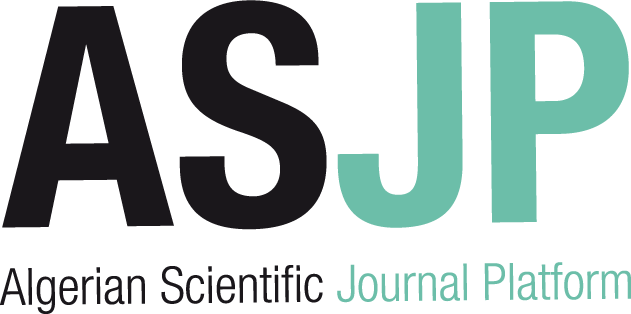| Titre : |
Quantitative modeling in toxicology |
| Type de document : |
texte imprimé |
| Auteurs : |
Krishnan, Kannan, Éditeur scientifique ; Andersen, Melvin E., Éditeur scientifique |
| Editeur : |
New York : John Wiley & Sons |
| Année de publication : |
2010 |
| Importance : |
XVII, 485 p. |
| Présentation : |
ill. |
| Format : |
25 cm |
| ISBN/ISSN/EAN : |
978-0-470-99809-0 |
| Note générale : |
Références bibliogr. - Index |
| Langues : |
Anglais (eng) |
| Mots-clés : |
Toxicologie -- Modèles mathématiques
Toxicology -- Mathematical models
Toxicology -- methods
Environmental Exposure -- adverse effects
Hazardous Substances -- toxicity
Models, Biological
Toxicity Tests -- methods |
| Index. décimale : |
615.9 Toxicologie en général. Etude des produits toxiques et des poisons. Intoxication |
| Résumé : |
"In Quantitative Modeling in Toxicology leading experts outline the current state of knowledge on the modeling of dose, tissue interactions and tissue responses. Each chapter describes the mathematical foundation, parameter estimation, challenges and perspectives for development, along with the presentation of a modeling template. Additionally, tools and approaches for conducting uncertainty, sensitivity and variability analyses in these models are described" |
| Note de contenu : |
Summary :
Chapter 1. Quantitative modeling in toxicology: An introduction
Chapter 2. PBPK modeling: a primer
Chapter 3. Pharmacokinetic modeling with Manganese - An essential element
Chapter 4. Physiologically-based modeling of pharmacokinetic interactions in chemical mixtures
Chapter 5. Physiological Parameters and Databases for PBPK Modeling
Chapter 6. Modeling cholinesterase Inhibition
Chapter 7. Modeling of Protein Induction and dose-dependent hepatic sequestration
Chapter 8. Bistable Signaling Motifs and Cell Fate Decisions
Chapter 9. Ultrasensitive Response Motifs in Biochemical Networks
Chapter 10. Gene and Protein Expression - Modeling Nested Motifs in Cellular and Tissue Response Networks
Chapter 11. Modeling Kidney and Liver Cytotoxicity
Chapter 12. Computational Model for Iodide Economy and the HPT Axis in the Adult Rat
Chapter 13. Two Stage Clonal Growth Modeling of Cancer
Chapter 14. Statistical and Physiological Modeling of the Toxicity of Chemicals in Mixtures
Chapter 15. (Q)SAR Models of Adverse Responses: Acute Systemic Toxicity
Chapter 16. Modeling Exposures to Chemicals from Multiple Sources and Routes
Chapter 17. Probabilistic Reverse Dosimetry Modeling for Interpreting Biomonitoring Data
Chapter 18. Quantitative Modeling in Noncancer Risk Assessment
Chapter 19. Application of Physiologically Based Pharmacokinetic Modeling in Risk Assessment
Chapter 20. Uncertainty, Variability and Sensitivity Analyses in Simulation Models
Chapter 21. Evaluation of Quantitative Models in Toxicology: Progress and challenges |
Quantitative modeling in toxicology [texte imprimé] / Krishnan, Kannan, Éditeur scientifique ; Andersen, Melvin E., Éditeur scientifique . - New York : John Wiley & Sons, 2010 . - XVII, 485 p. : ill. ; 25 cm. ISBN : 978-0-470-99809-0 Références bibliogr. - Index Langues : Anglais ( eng)
| Mots-clés : |
Toxicologie -- Modèles mathématiques
Toxicology -- Mathematical models
Toxicology -- methods
Environmental Exposure -- adverse effects
Hazardous Substances -- toxicity
Models, Biological
Toxicity Tests -- methods |
| Index. décimale : |
615.9 Toxicologie en général. Etude des produits toxiques et des poisons. Intoxication |
| Résumé : |
"In Quantitative Modeling in Toxicology leading experts outline the current state of knowledge on the modeling of dose, tissue interactions and tissue responses. Each chapter describes the mathematical foundation, parameter estimation, challenges and perspectives for development, along with the presentation of a modeling template. Additionally, tools and approaches for conducting uncertainty, sensitivity and variability analyses in these models are described" |
| Note de contenu : |
Summary :
Chapter 1. Quantitative modeling in toxicology: An introduction
Chapter 2. PBPK modeling: a primer
Chapter 3. Pharmacokinetic modeling with Manganese - An essential element
Chapter 4. Physiologically-based modeling of pharmacokinetic interactions in chemical mixtures
Chapter 5. Physiological Parameters and Databases for PBPK Modeling
Chapter 6. Modeling cholinesterase Inhibition
Chapter 7. Modeling of Protein Induction and dose-dependent hepatic sequestration
Chapter 8. Bistable Signaling Motifs and Cell Fate Decisions
Chapter 9. Ultrasensitive Response Motifs in Biochemical Networks
Chapter 10. Gene and Protein Expression - Modeling Nested Motifs in Cellular and Tissue Response Networks
Chapter 11. Modeling Kidney and Liver Cytotoxicity
Chapter 12. Computational Model for Iodide Economy and the HPT Axis in the Adult Rat
Chapter 13. Two Stage Clonal Growth Modeling of Cancer
Chapter 14. Statistical and Physiological Modeling of the Toxicity of Chemicals in Mixtures
Chapter 15. (Q)SAR Models of Adverse Responses: Acute Systemic Toxicity
Chapter 16. Modeling Exposures to Chemicals from Multiple Sources and Routes
Chapter 17. Probabilistic Reverse Dosimetry Modeling for Interpreting Biomonitoring Data
Chapter 18. Quantitative Modeling in Noncancer Risk Assessment
Chapter 19. Application of Physiologically Based Pharmacokinetic Modeling in Risk Assessment
Chapter 20. Uncertainty, Variability and Sensitivity Analyses in Simulation Models
Chapter 21. Evaluation of Quantitative Models in Toxicology: Progress and challenges |
|  |










